نحلات شيفا
تحلات شیعه الحي اليهودي الثالث في غربي المدينة ، أقيم عام ١٨٦٩ بحيث يتميز ببيوته الصغيرة التي اقيمت حول ساحات داخلية في وسطها آبار مياه ، وعلى جانبي ازقتها الملتوية والمرصوفة شمخت المساكن ، والكنس والمدارس الدينية ، والورش والحوانيت .
آن قرب الحي لطريق يافا حولته إلى مركز تجاري زود الخدمات لعابري السبيل .
ونتيجة للقرار الخاص لبلدية أورشليم القدس تم ترميم الحي : تجديد البنية الأساطية ورصف الشوارع من جديد واعيد للمنازل منظرها الطبيعي وذلك عام ١٩٨٨ - ١٩٨٩ .
נחלת שבעה
נחלת שבעה השכונה היהודית השלישית מחוץ לחומות (קדמו לה משכנות שאננים ומחנה ישראל).
נוסדה בשנת תרכ"ט (1869) ונקראת על שם שבעת מייסדיה:
מיכל הכהן; חיים הלוי קובנר; בנימין (בייניש) סלנט; אריה לייב (לומזר) הורוויץ; יואל משה סלומון; יוסף ריבלין; יהושע ילין. השבעה יצאו בעקבות צפיפות ותחלואה בין החומות ובנו את ביתם על חלקת קרקע בת 24,000 אמות מרובעות (כ-14 דונם).
השכונה מתאפיינת בבתיה הקטנים שנבנו מסביב לחצרות פנימיות ובמרכזן בורות מים. משני צידי סימטאותיה המפותלות והמרוצפות ניצבו בתי-מגורים, בתי-כנסת, ישיבות, בתי-מלאכה וחנויות.
קרבתה לדרך יפו שנסללה בשנת הקמתה של נחלת שבעה, נתנה תנופה להתפתחות המסחר בשכונה.
במרוצת השנים נבנו בשכונה בתים רבים על-ידי עולים מבוכרה, מארצות הבלקן ומארצות אחרות, שיצרו בה הווי חיים מיוחד.
מאז ראשית המנדט הבריטי, שבה ועלתה הדרישה להרוס את השכונה ולבנות במקומה בנייני משרדים גבוהים וכבישים רחבים. בשנת תשמ"ח (1988) אושרה התכנית לשימורה: השכונה שוקמה, חודשה התשתית, הרחובות רוצפו מחדש ולחזיתות הבתים הוחזר המראה הראשוני.
העבודות נעשו על ידי עירית ירושלים בשנים תשמ"ח-תשמ"ט (1988-1989) בשיתוף עם משרד התיירות, בהנחיית המחלקה לשיפור פני העיר ובאמצעות החברה לפתוח מזרח ירושלים.
[מפה של השכונה ובה מצויינים המקומות הבאים:
1. הבית הראשון בנחלת שבעה.
2. בית יואל משה סלומון
3. בית-כנסת "נחלת יעקב"
4. בית-כנסת "אהל יצחק"
5. החצר הפנימית ובור המים
6. ישיבת "שערי ציון"
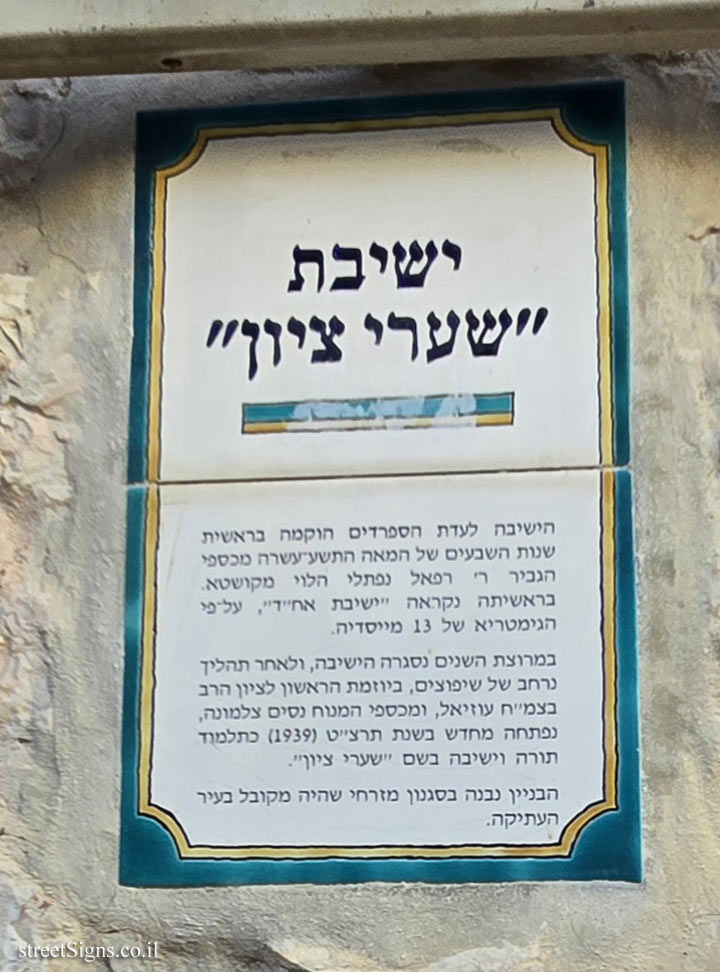 Click for sign's details
Click for sign's details 7. מלון "בהרב"
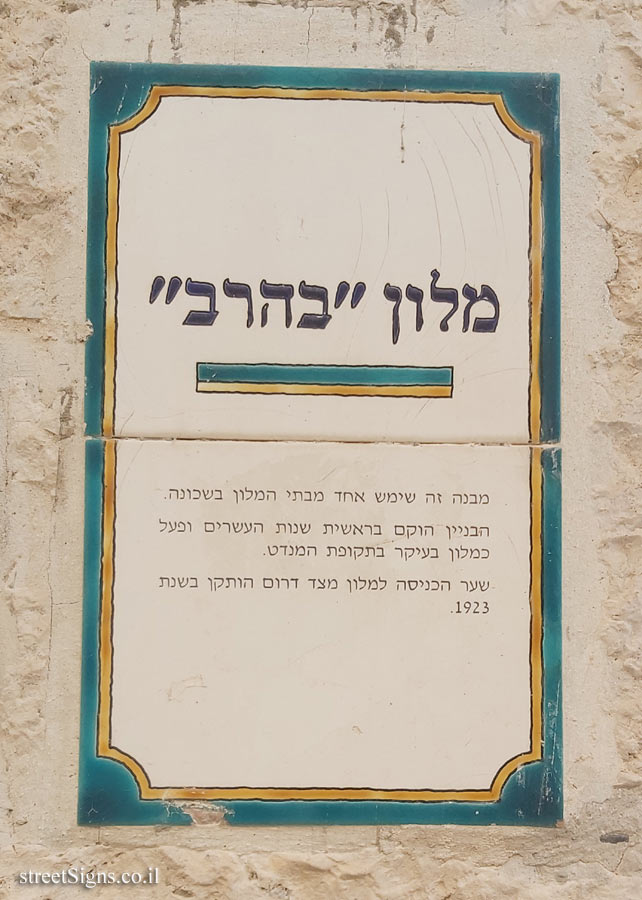 Click for sign's details
Click for sign's details 8. תנור השכונה
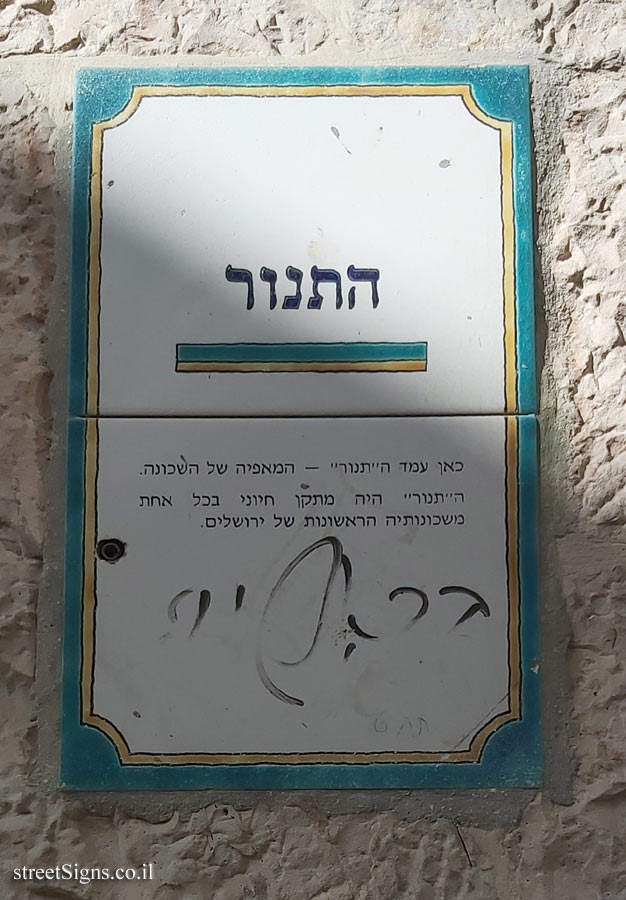 Click for sign's details
Click for sign's details]
[תמונה של תעודת ייסוד השכונה]
Nahalat Shiv’a
Nahalat Shiv’a, the third Jewish neighborhood outside the Old City Walls. It was founded in 1869 and named after its seven founders. The neighborhood is characterized by its small houses built around inner court- yards with water cisterns at the center.
Over the course of time, there was increasing pressure on the Municipality of Jerusalem to demolish the neighborhood and build skyscrapers and roads in its place. All the proposals were rejected.
In 1988 the neighborhood was renovated by the Municipality, the infrastructure renewed, the streets repaired and the facades of the houses were restored.

 Click for sign's details
Click for sign's details  Click for sign's details
Click for sign's details  Click for sign's details]
Click for sign's details] 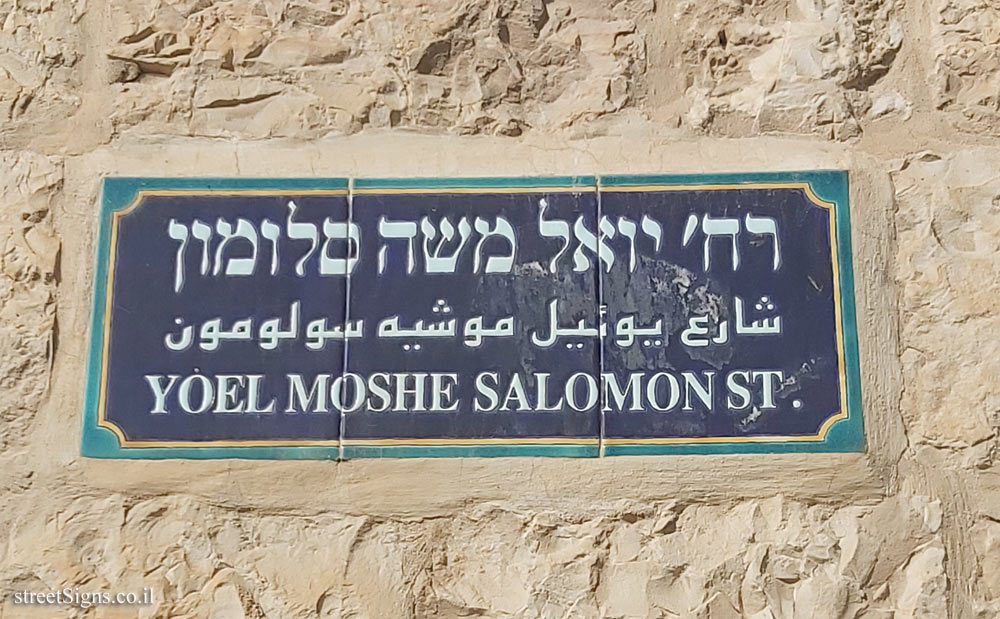 Click for sign's details
Click for sign's details 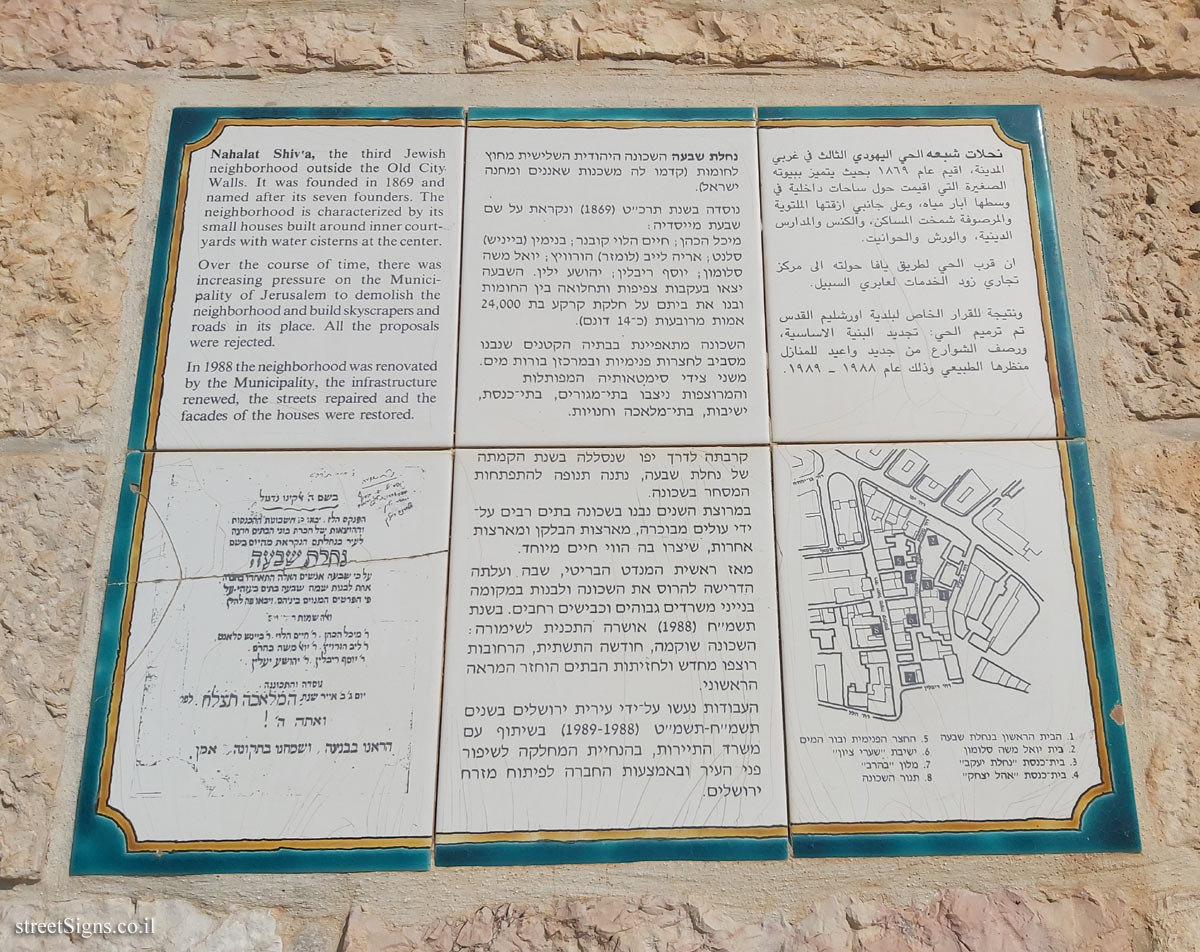 Click for a larger image
Click for a larger image 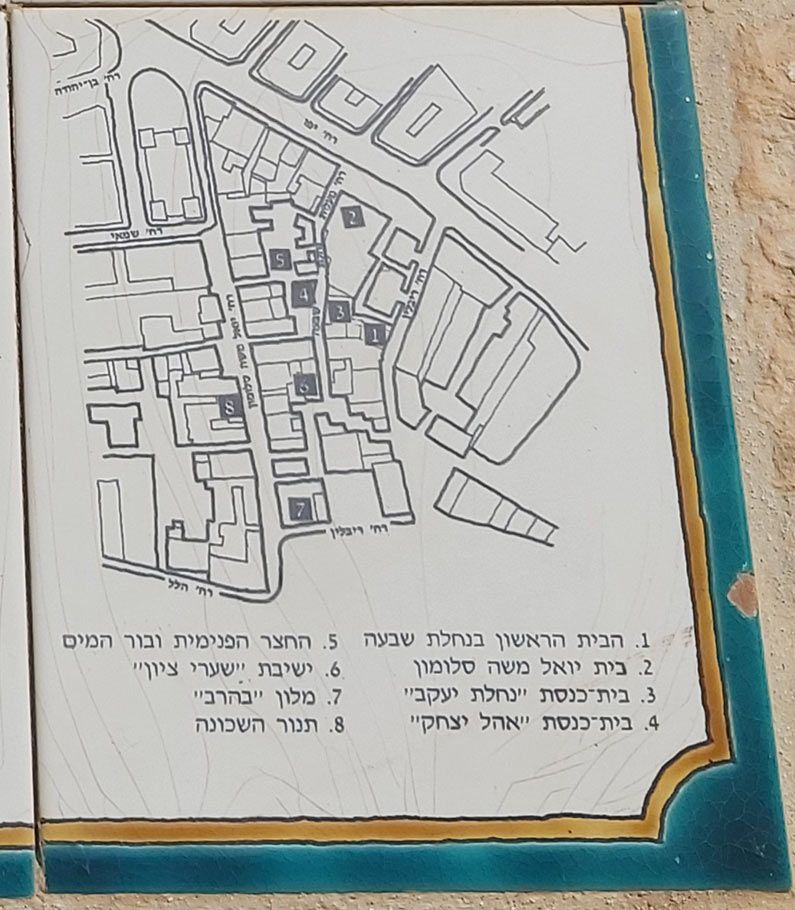 Click for a larger image
Click for a larger image 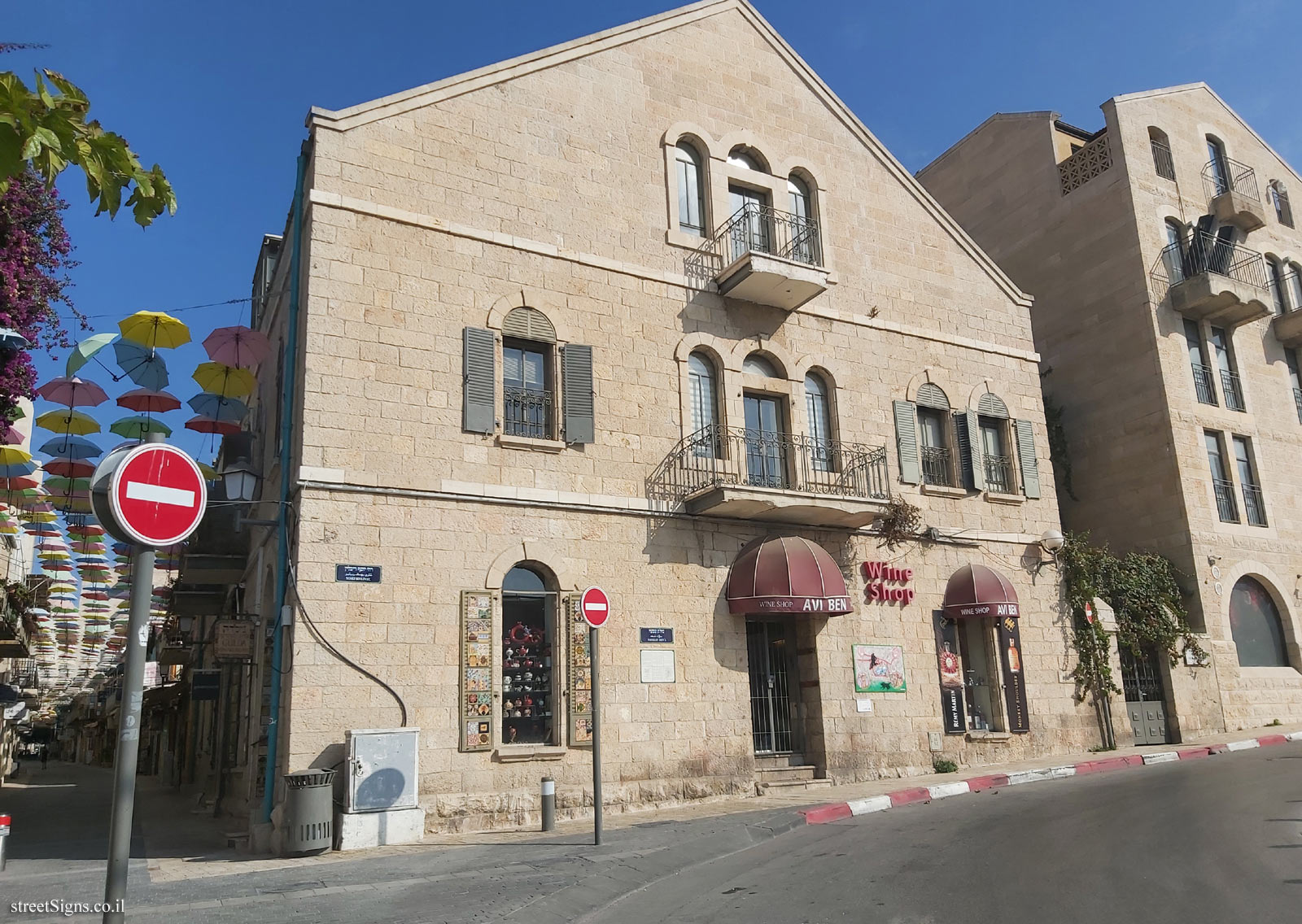 Click for a larger image
Click for a larger image  Click for sign's details
Click for sign's details  Click for sign's details
Click for sign's details  Click for sign's details]
Click for sign's details] 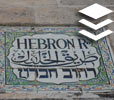 Click for all signs belonging to Decorated ceramic signs
Click for all signs belonging to Decorated ceramic signs
 355 Meter |
355 Meter |  418 Meter |
418 Meter |  777 Meter |
777 Meter |  792 Meter |
792 Meter |  814 Meter
814 Meter